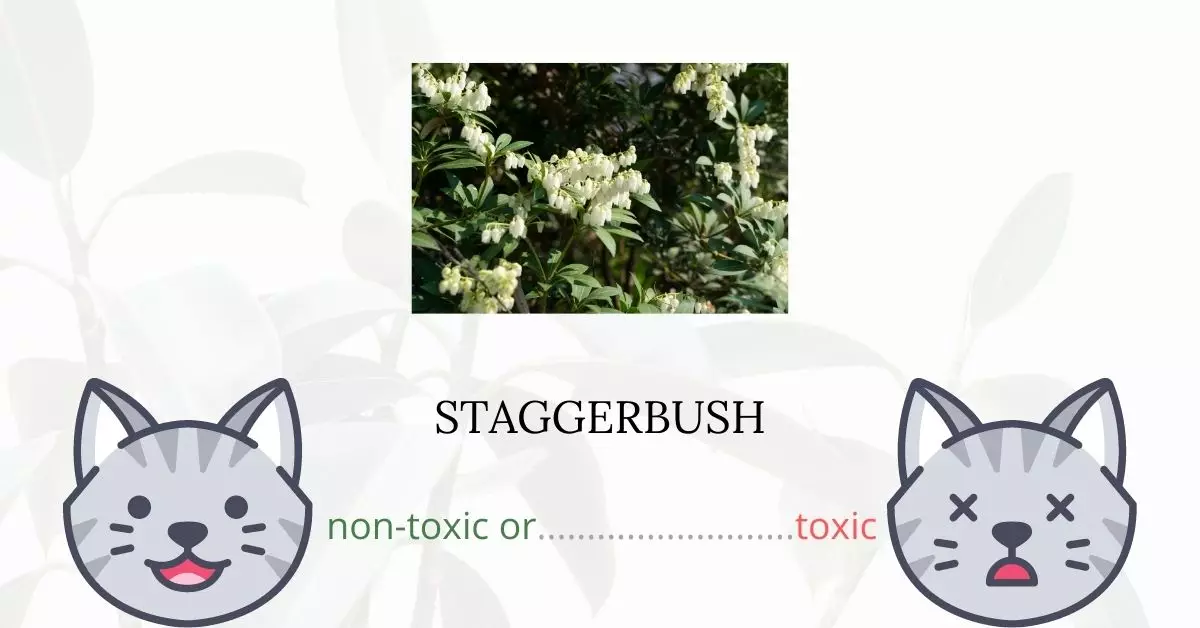The staggerbush plant indeed contains a high concentration of a chemical called ‘grayanotoxin,’ which is conclusively toxic to cats, potentially leading to severe and even fatal repercussions.
This article is formulated in collaboration with a team of experienced DVMs (Doctors of Veterinary Medicine). Their valuable insights ensure the provision of precise and current information on the risks affiliated with staggerbush and its implications on cats. For added accuracy and credibility, we’ve corroborated our findings with high-authority websites like ASPCA and PetMD, intensively researching each plant’s potential hazards.
Grayanotoxin inflicts harm on its host by penetrating cell membranes and depolarizing the cell, inhibiting the transfer of crucial electrical impulses within the nervous system. In essence, this denotes that a brain can no longer coordinate the actions occurring in organs affected by grayanotoxin. By familiarizing yourself with the information and recommendations shared in this article, you can safeguard your feline friends from the harmful impacts of this plant.
Clinical Signs of Staggerbush Poisoning in Cats
When cats come into contact, inhale, or ingest the Staggerbush plant, several clinical signs manifest due to the presence of grayanotoxin. This toxin interrupts normal cellular functions, predominantly impacting the nervous system, leading to a variety of symptoms.
- Vomiting and Diarrhea: The ingestion of staggerbush commonly induces gastrointestinal disturbances such as vomiting and diarrhea. These symptoms occur as the body’s reflex to expel the toxic substance.
- Loss of Coordination and Weakness in Limbs: Grayanotoxin affects the neurological system, causing loss of coordination and limb weakness as the brain struggles to send proper signals to the body parts.
- Depression and Excessive Salivation: Affected cats may exhibit behavioral changes like depression due to the toxin’s impact on the brain, along with excessive salivation, a common response to nausea or gastrointestinal upset.
- Slowed Heartbeat and Low Blood Pressure: The toxin impacts the cardiovascular system, causing a reduction in heart rate and blood pressure, which can be critical if not addressed promptly.
- Difficulty Breathing and Congestive Heart Failure: Respiratory distress may arise, and in severe cases, the toxin can lead to congestive heart failure due to its deleterious effects on the heart muscles.
- Severe Consequences from High Exposure: When large amounts of staggerbush are consumed, the implications can be drastic and immediate, potentially leading to cardiac arrest, unconsciousness, coma, and, in extreme instances, death.
It is crucial to seek immediate veterinary attention if a cat exhibits any of these symptoms after potential exposure to Staggerbush, as prompt intervention can significantly impact the prognosis and recovery of the affected feline. The comprehensive information provided in this article is intended to raise awareness and aid in the early detection and prevention of staggerbush poisoning in cats.
First Aid and Treatment of Staggerbush Poisoning in Cats
The veterinarian will begin fluid therapy with the cat to help increase urine production while also compensating for dehydration caused by vomiting and diarrhea. The veterinarian may also opt to provide activated charcoal to the cat to absorb any grayanotoxin that may have remained in the cat’s digestive system. If the cat’s heart rate has slowed to dangerous levels, a stimulant such as atropine or epinephrine may be given to maintain a healthy rhythm, although this is usually done for emergencies only.
Recovery from Staggerbush Poisoning in Cats
Staggerbush poisonings usually take some time to recover from, with most cats needing a few weeks to fully recover. It is critical for owners to limit their cats inside the house in order to preserve energy and provide lots of opportunities for relaxation.
Prevention of Staggerbush Poisoning in Cats
The best method to prevent your cat from getting poisoned is to keep your house cat-friendly and let them stay indoors. You can easily monitor your cat from inside your home and keeping them busy indoors will minimize the possibility of exposure to staggerbush or other toxic plants outside.
If you love plants but have cats at home, check out these lists:





